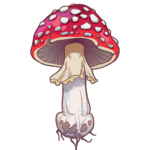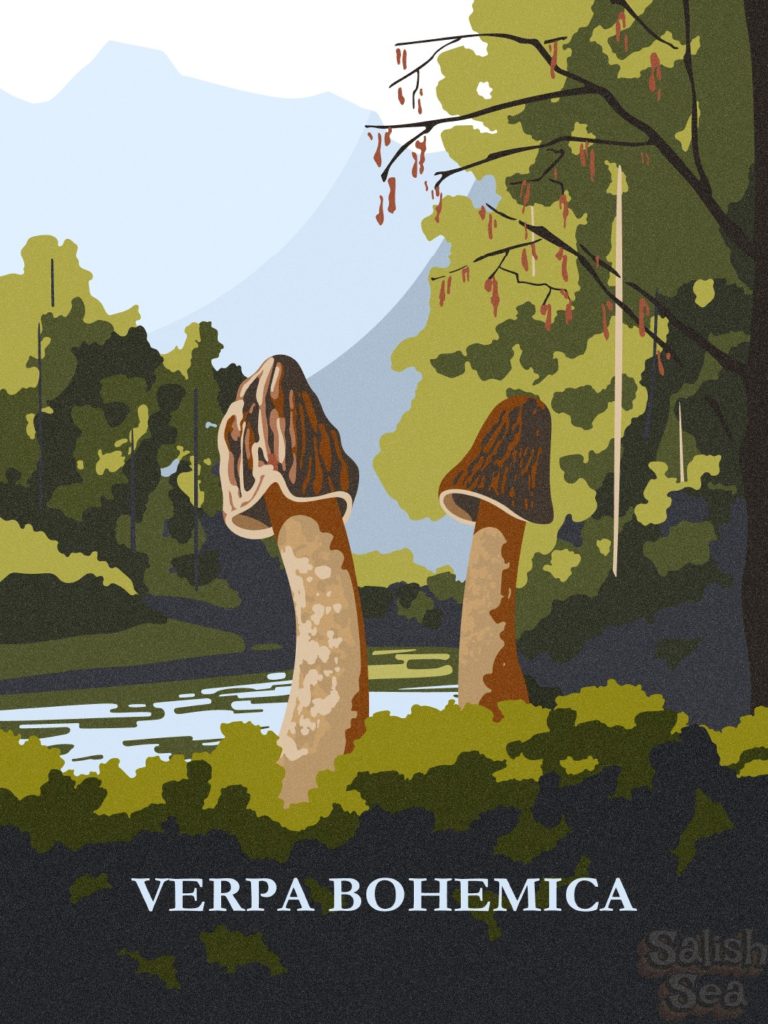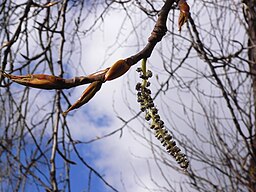Verpa – Thimble Morels
Many Verpas look remarkably similar to their true morel (genus Morchella) counterparts with a couple of notable exceptions.
The caps of most true morels are fused to the stipe. Verpas on the other hand are only attached at the top of the stipe like a thimble sitting on top of a rod. There are some exceptions.
Second, true morels are hollow whereas verpas will have a pithy, cotton, or weblike tissue inside the stem. Over time the inner pith can dry out leaving the inside hollow.
Here is a link to iNaturalist observations of Verpa in Oregon and Washingon (link)
The specific epithet “bohemica” refers to the region Bohemia, in the Czech Republic, where this mushroom was first found and described in 1947 by mycologist Josef Velenovský.
Many Verpas look remarkably similar to their true morel Morchella counterparts with a couple of notable exceptions.
Cap: The caps of Verpas are only attached at the top of the stipe like a thimble sitting on top of a rod. One can easily separate the cap from the stem.
*The caps of most true morels are fused to the stipe or connected from top to bottom
The cap texture of Verpa bohemica is wavy or wrinkled. When young, the ridges are somewhat slippery, slimy, or viscid, and generally quite smooth. Over time and with dry weather the tissue will dry out and the ridges will appear darkened and withered.
Stem: Cylindrical with a matte texture. Cotton or pithy interior. (see cross-section photo)
Edibility: Ok for most when fully cooked however individuals might experience varying sensitivities to compounds in Verpa mushrooms. Edibility is said to be identical to true morels and no detectible levels of the toxin gyromitrin has ever been measured. There are other toxins in both true morels and Verpa. In many cases a forager will eat these without ill-effects, while others may experience gastrointestinal issues such as upset stomach or diarrhea.
Learn more about toxins found in morels and morel-like species here
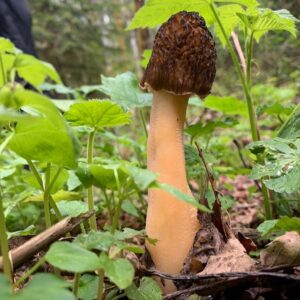

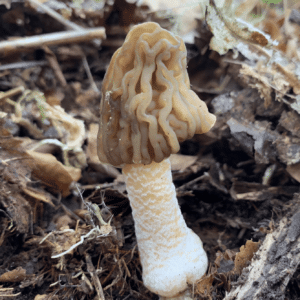
Verpa Seasonality
False Morels / Verpas / Wrinkled Thimble Caps are a spring fruiting mushroom that can be found in Oregon and Washington from March through April and into June at higher elevations
Habitat
Verpas are found around hardwoods like poplars near rivers and streams. The challenge with looking for verpas in these areas is that the ground is still covered in leaf litter so the light tan caps of verpas can blend in with faded brown leaves covering the ground. Complicating the hunt further is that the mushrooms can be fully covered by dead leaves so you may need to look under mats of leaves to uncover them.
Habitat
Verpas are found around hardwoods like poplars near rivers and streams. The challenge with looking for verpas in these areas is that the ground is still covered in leaf litter so the light tan caps of verpas can blend in with faded brown leaves covering the ground. Complicating the hunt further is that the mushrooms can be fully covered by dead leaves so you may need to look under mats of leaves to uncover them.
See Also
Other Articles
Morels
Explore the variety of morel species that can be found in the Pacific Northwest including their habitat and seasonality
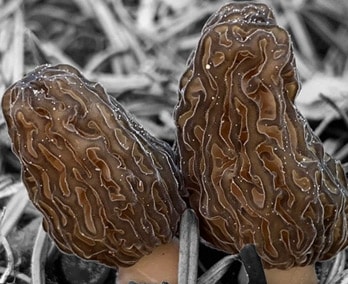
Gyromitra
This is the most important mushroom to learn to avoid when foraging for morels

Popular Edible Mushrooms
The majority of mushroom foragers are only interested in 5-10 popular mushrooms. Browse some of the common species here
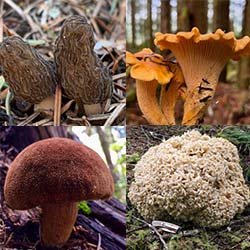
A Range of Poisonous Mushrooms
Mushrooms cover a wide spectrum between edible and deadly poisonous, and there really are not any shortcuts for identifying the poisonous ones.

